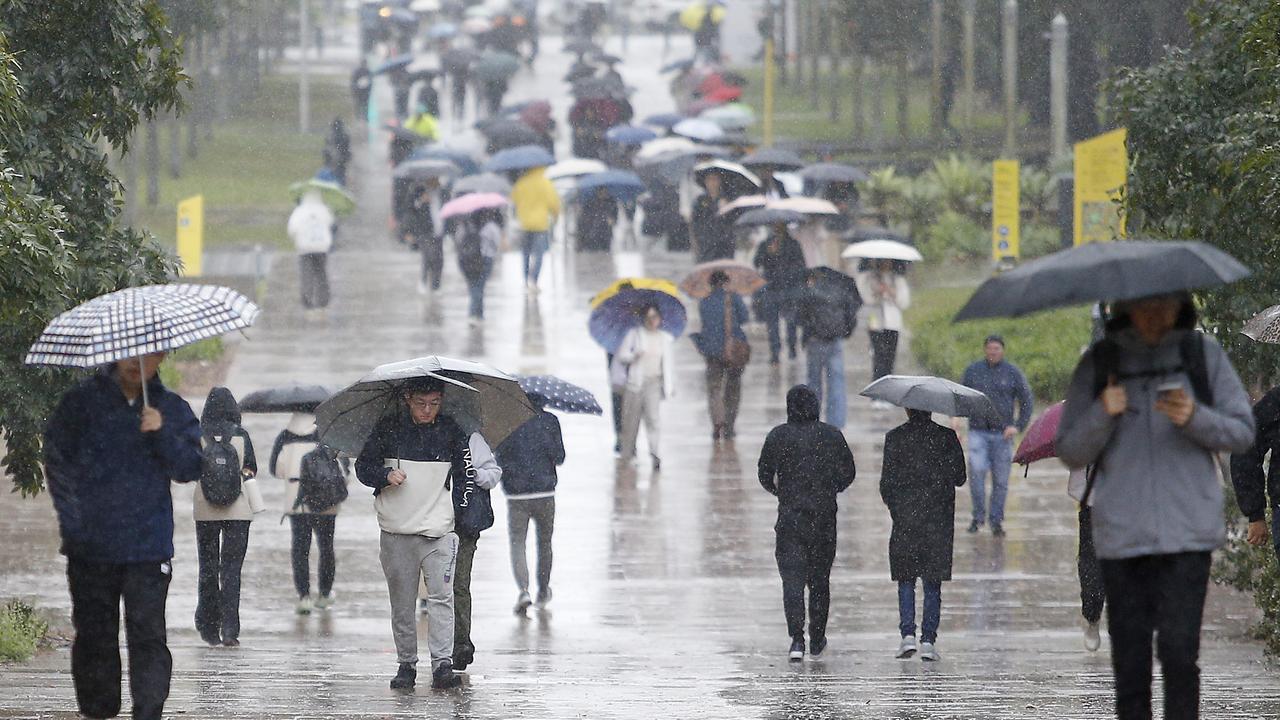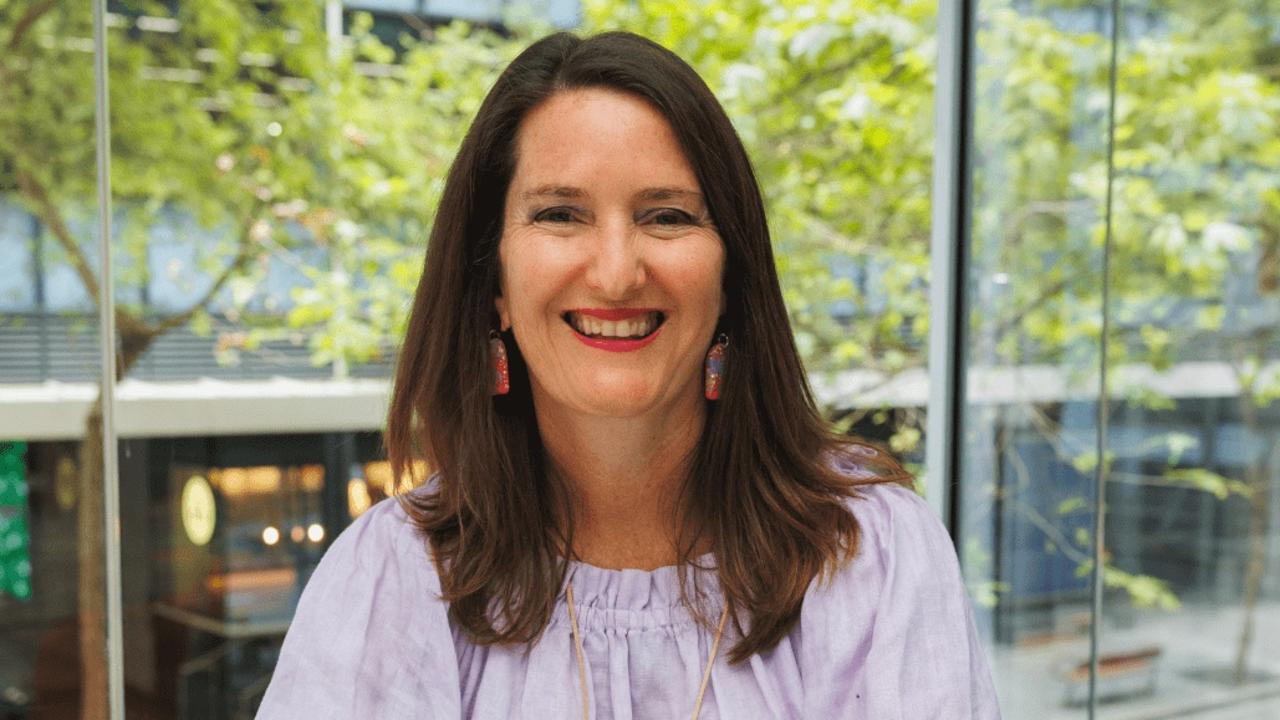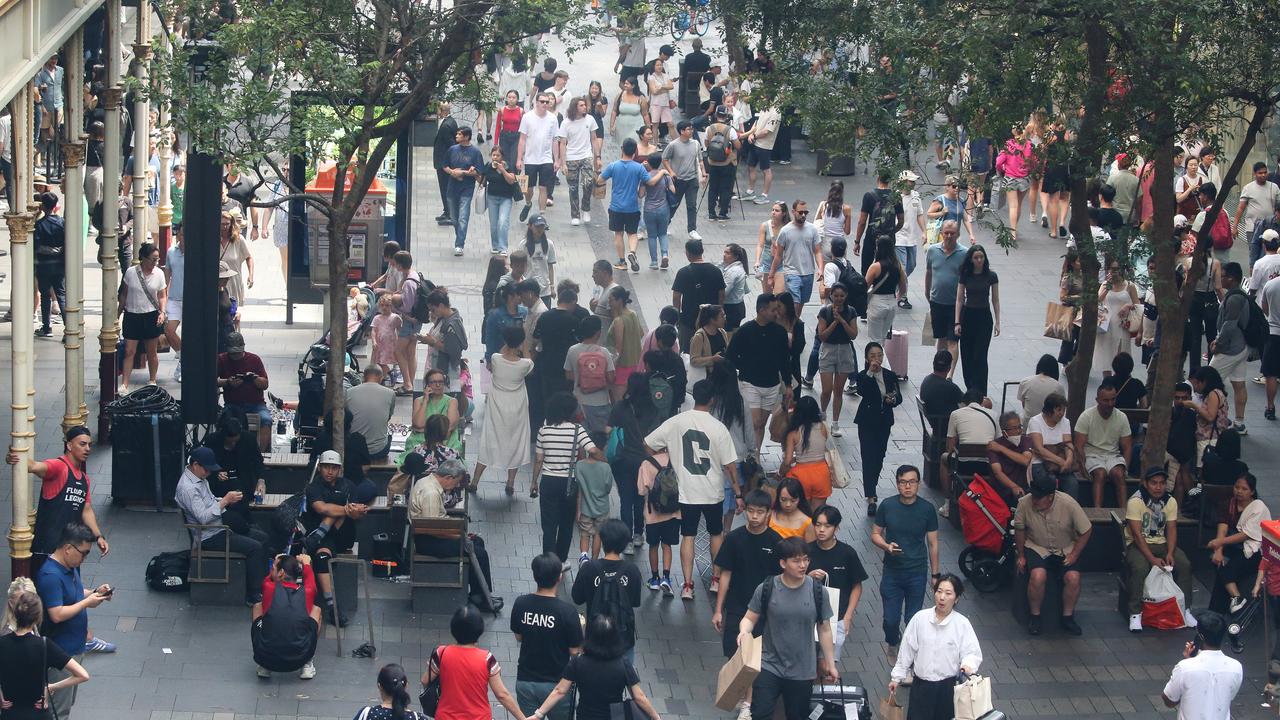‘You need us’: International students protest visa changes
International students protesting recent visa changes say they fear they may be forced to return home, warning Australians “you need us”.
International students protesting recent visa changes say they fear they may be forced to return home, warning Australians “you need us”.
The federal government recently tightened the rules around the popular 485 temporary graduate visa as part of its migration strategy
The 485 visa previously granted full post-study work rights for international students for up to eight years, making it one of the most attractive of its kind in the world and creating a large group of “permanently temporary” migrants.
It carried no requirement that they be qualified for any of the jobs on the Skilled Occupation List, have a firm offer of work from an employer, find a job related to their qualifications or be paid a minimum salary.
The former Gillard government greatly expanded post-study work rights for international students in 2013 on the recommendations of the 2011 Knight review of the student visa program, contributing to a massive boom in temporary migration.
But under a migration overhaul announced by the Albanese government earlier this year, eligibility criteria and post-study work duration have been tightened for everyone on a 485 visa as of July 1.

‘You need us!’
Students held ‘Vigil of Hope’ protests around the country on Friday to demand a fair transition period.
“We don’t deserve to be singled out because of our age,” said JC Coca, a speaker at one event, SBS reported. “Australia, you need us! You need my skills!”
The changes include a reduction of the maximum age from 50 to 35, increased English proficiency requirements, restrictions on visa transfers and extensions, and the inability to stay and work for more than two years unless students have completed courses in critical sectors such as healthcare and technology.
Around 20,000 students are expected to be impacted by the changes, many of whom fear being forced to return home once their visas expire.
Students who attended protests in cities including Sydney, Melbourne and Canberra told SBS they anticipated the visa would provide them with essential work experience in Australia.
“We were led to believe that we could work here with the 485 visa for at least two to three years,” said Emme David, an environmental consultant.
Gautum Khanna, an international student from India, said there should be a grandfathering clause for those who arrived before the changes. “I’m not against the reduction of age to 35, but we came here before this was all announced,” he said. “We should be exempt from this change.”

‘Left high and dry’
Migration agent Melanie Macfarlane, founder of MM Migration, said while changes to the 485 visa had “some merits”, she agreed there should be grandfathering for students left “high and dry”.
“The idea [is] to encourage and bring about a younger generation of highly skilled migrants into Australia, with the ability to pay taxes for a longer period of time,” she said.
“The purpose is also to stop students from moving from one visa to another ad infinitum, with no realistic proposition of skilled work in Australia. However the theory is one thing, in practice it is another and the reality we’re seeing is this is not doing the country’s reputation any good at all.”
Ms Macfarlane said the problem was introducing too many restrictions too quickly, including more than doubling the cost of the student visa application, leading to “vast volumes” of student visa refusals.
“The changes should have included a grandfathering provision for current students who after spending hard-earned money and time in the country with a promise of a visa to work full-time post-studies, suddenly find themselves in a position where they have no choice but to leave the country,” she said.
“These students have been left high and dry and moreover the country will be left without sufficient people to work in skilled positions, who might be aged 37 for example, and also without people to work in many of the jobs that Australians refuse to do.”
It would also encourage those who no not wish to leave the country to “look for all sorts of loopholes and other types of visas to apply for, which may not benefit the economy long-term”, she added.
The crackdown on overseas student numbers has already triggered a massive rise in onshore refugee applications, The Australian Financial Review reported in August.
“It is ultimately a sledgehammer approach which is already resulting in unintended consequences that will be of no benefit to our nation at all,” Ms Macfarlane said.
“Like many of the recent migration changes, there has been no due consultation and this has not been properly thought through at all.”

‘Not enough are departing’
But Dr Abul Rizvi, former deputy secretary of the Immigration Department, said there was no way the government could achieve its net migration target of 235,000 per year “without substantial tightening of student and temporary graduate visa policy”.
“Grandfathering would increase the policy challenge not reduce it,” he said.
Australia’s population has ballooned to 27.1 million people with 388,000 net overseas migrants entering in the first nine months of the 2023-24 financial year, according to figures from the Australian Bureau of Statistics (ABS) last month.
The latest numbers guarantee the government will blow well past the 395,000 forecast from this year’s budget, after Prime Minister Anthony Albanese promised to wind back immigration to “sustainable” levels.
“At present, there are approximately 1.1 million students and former students in Australia on a range of temporary visas, including bridging visas,” said Dr Rizvi.
“How far the government is prepared to let this number grow is a crucial policy question. It is one that will be worrying the Immigration Minister much more than the Education Minister or the international education industry. But it is one that desperately needs to be put to ministers and to Treasury net migration forecasters.”
Dr Rizvi said traditionally, temporary graduates make a negative contribution to net migration as they are students who have already been counted as a net migration arrival and are counted as a net migration departure when they leave.
Temporary graduates who secure a permanent visa or a skilled temporary visa help reduce the number of temporary graduates in Australia but do not count as a net migration departure.
“The number of temporary graduates in Australia increased by around 7000 in July/August 2024 compared to a decline of 6000 in July/September 2023,” he said.
“That suggests more students are securing a temporary graduate visa … and not enough temporary graduates are either departing or securing permanent residence or a skilled temporary visa.”
Dr Rizvi said that on current policy settings, the rate at which temporary graduates secure permanent visas was unlikely to increase with the Home Affairs Department signalling it has “more than enough” former business and IT students applying.

“The rising number of temporary graduate visa holders in Australia, already at a record 223,961 at the end of August — plus those in the bridging visa backlog — and growing steadily, will increase the number of former students in immigration limbo,” he said.
“A growing number of temporary graduate visa holders will hit a visa brick wall from 2025 as they will run out of options for extending stay [as] policy now prevents them from returning to a student visa. What they do will be crucial for net migration, and migration policy more generally, if large numbers decide they have no other option than to apply for asylum.”
Treasury forecasts suggest the government “expects large numbers to depart in 2024-25”.
“This may be a triumph of hope over reality,” Dr Rizvi said.
In Canada, similar changes to postgraduate study rights sparked major protests across the country earlier this year. Up to 70,000 international students, many from India, were left facing deportation by the Trudeau government’s immigration reforms.






